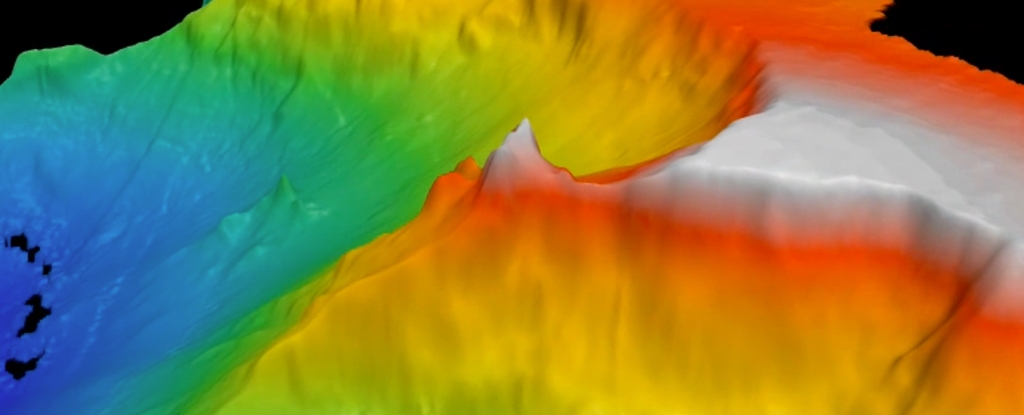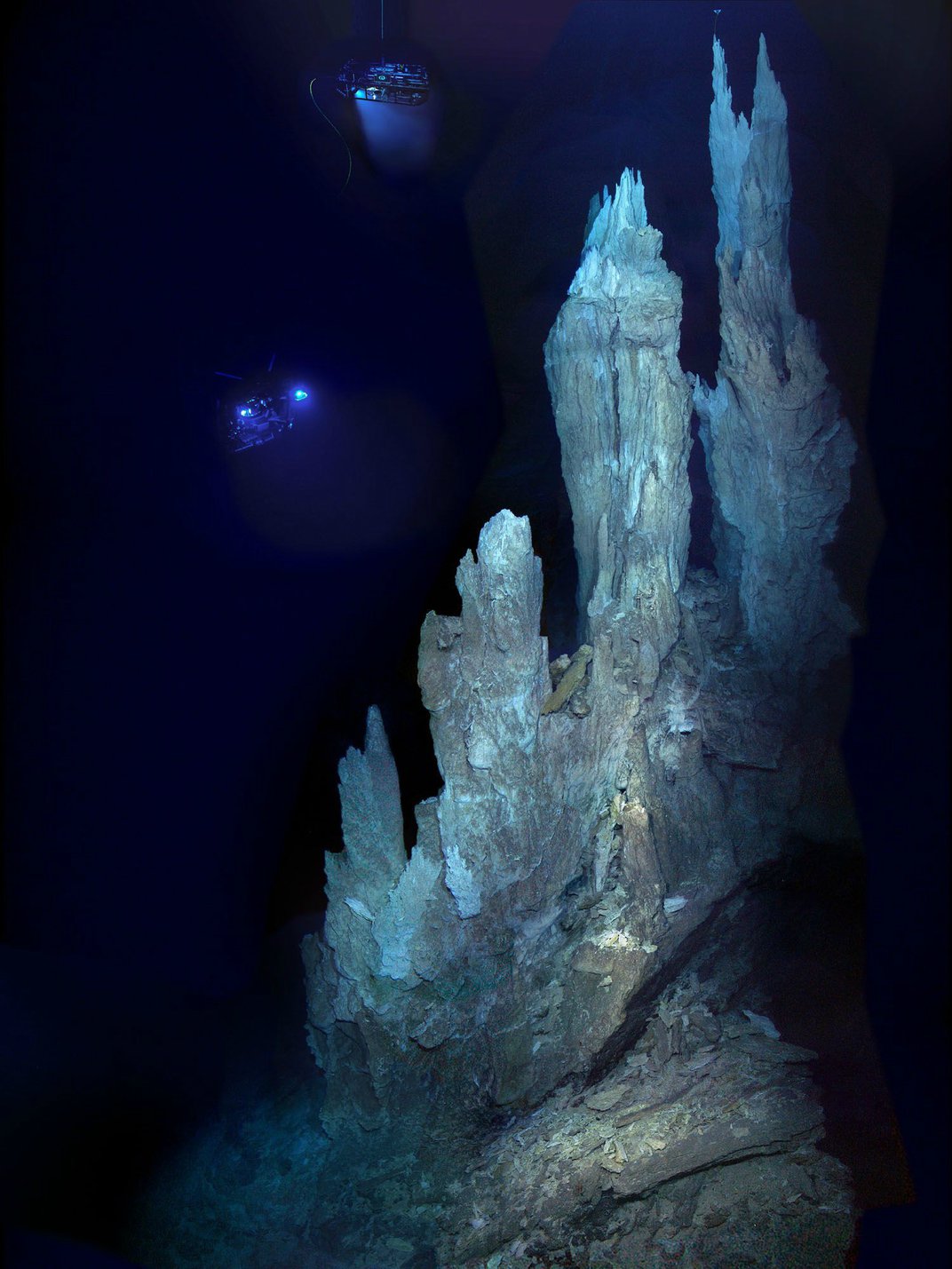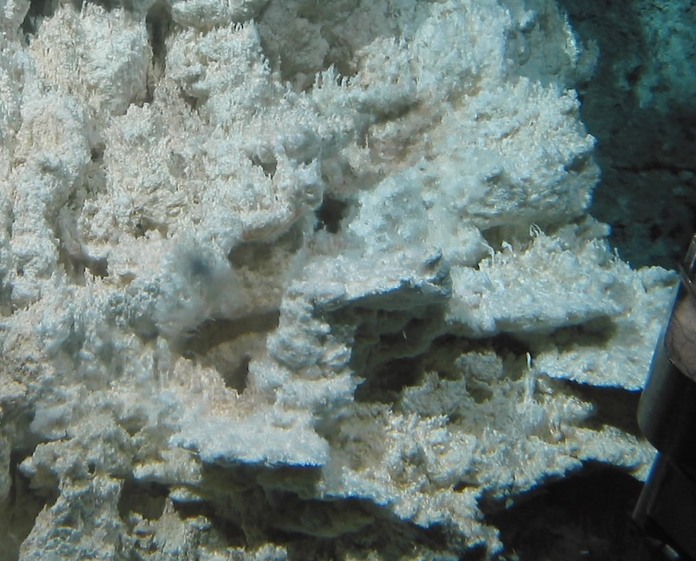'Lost City' Deep in The Ocean Is Unlike Anything We've Ever Seen Before on Earth
19 November 2023
By CARLY CASSELLA

Underwater terrain of the Lost City Hydrothermal Fields. (Lost City Research/University of Washington)
Close to the summit of an underwater mountain west of the Mid-Atlantic Ridge, a jagged landscape of towers rises from the gloom.
Their creamy carbonate walls and columns appear ghostly blue in the light of a remotely operated vehicle sent to explore.
They range in height from tiny stacks the size of toadstools to a grand monolith standing 60 meters (nearly 200 feet) tall. This is the Lost City.

A remotely operated vehicle shines a light on the spires of the Lost City. (D. Kelley/UW/URI-IAO/NOAA).
Discovered by scientists in 2000, more than 700 meters (2,300 feet) beneath the surface, the Lost City Hydrothermal Field is the longest-lived venting environment known in the ocean. Nothing else like it has ever been found.
For at least 120,000 years and maybe longer, the upthrusting mantle in this part of the world has reacted with seawater to puff hydrogen, methane, and other dissolved gases out into the ocean.
In the cracks and crevices of the field's vents, hydrocarbons feed novel microbial communities even without the presence of oxygen.

Strands of bacteria living on a calcite vent in the Lost City. (University of Washington/CC BY 3.0).
Chimneys spewing gases as hot as 40 °C (104 °F) are home to an abundance of snails and crustaceans. Larger animals such as crabs, shrimp, sea urchins, and eels are rare, but still present.
More:
https://www.sciencealert.com/lost-city-deep-in-the-ocean-is-unlike-anything-weve-ever-seen-before-on-earth


